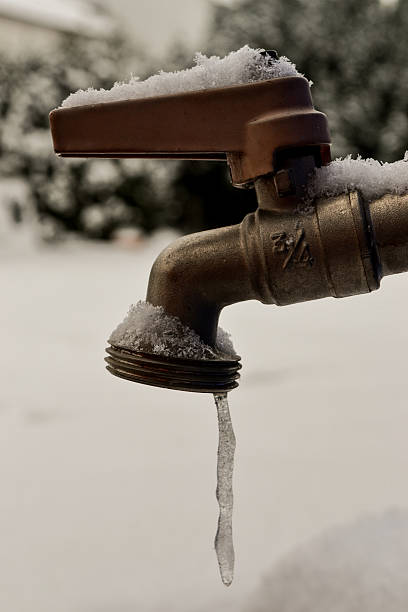Tips to Keep Your Pipes from Freezing Issues: Crucial Advice
Tips to Keep Your Pipes from Freezing Issues: Crucial Advice
Blog Article
They are making a number of good points related to 6 Ways to Prevent Frozen Pipes in general in the article further down.

Cold weather can ruin your plumbing, specifically by freezing pipes. Right here's just how to prevent it from taking place and what to do if it does.
Introduction
As temperatures decrease, the threat of frozen pipes boosts, possibly resulting in expensive fixings and water damage. Understanding exactly how to stop icy pipes is important for home owners in cool climates.
Prevention Tips
Shielding susceptible pipelines
Cover pipelines in insulation sleeves or make use of warmth tape to shield them from freezing temperatures. Concentrate on pipelines in unheated or exterior areas of the home.
Heating techniques
Keep interior spaces appropriately warmed, especially areas with pipes. Open up cabinet doors to enable cozy air to distribute around pipelines under sinks.
How to determine icy pipes
Try to find lowered water flow from faucets, uncommon smells or sounds from pipes, and visible frost on subjected pipelines.
Long-Term Solutions
Architectural adjustments
Think about rerouting pipelines far from outside wall surfaces or unheated locations. Include added insulation to attic rooms, cellars, and crawl spaces.
Updating insulation
Buy top quality insulation for pipes, attics, and wall surfaces. Correct insulation aids keep regular temperature levels and minimizes the danger of frozen pipes.
Protecting Exterior Pipes
Garden hose pipes and outside taps
Detach and drain pipes garden pipes prior to winter. Set up frost-proof faucets or cover outdoor taps with protected caps.
Recognizing Frozen Pipes
What causes pipelines to ice up?
Pipelines ice up when subjected to temperature levels below 32 ° F (0 ° C) for expanded periods. As water inside the pipes ices up, it expands, putting pressure on the pipeline wall surfaces and possibly causing them to rupture.
Risks and problems
Frozen pipelines can result in water system disruptions, building damage, and costly repair services. Ruptured pipes can flood homes and cause comprehensive structural damage.
Indications of Frozen Piping
Recognizing icy pipelines early can stop them from breaking.
What to Do If Your Pipelines Freeze
Immediate activities to take
If you presume frozen pipes, keep faucets open up to soothe stress as the ice melts. Use a hairdryer or towels soaked in warm water to thaw pipes gradually.
Conclusion
Avoiding frozen pipelines requires positive measures and quick responses. By comprehending the causes, indicators, and preventive measures, house owners can shield their plumbing throughout winter.
5 Ways to Prevent Frozen Pipes
Drain Outdoor Faucets and Disconnect Hoses
First, close the shut-off valve that controls the flow of water in the pipe to your outdoor faucet. Then, head outside to disconnect and drain your hose and open the outdoor faucet to allow the water to completely drain out of the line. Turn off the faucet when done. Finally, head back to the shut-off valve and drain the remaining water inside the pipe into a bucket or container. Additionally, if you have a home irrigation system, you should consider hiring an expert to clear the system of water each year.
Insulate Pipes
One of the best and most cost-effective methods for preventing frozen water pipes is to wrap your pipes with insulation. This is especially important for areas in your home that aren’t exposed to heat, such as an attic. We suggest using foam sleeves, which can typically be found at your local hardware store.
Keep Heat Running at 65
Your pipes are located inside your walls, and the temperature there is much colder than the rest of the house. To prevent your pipes from freezing, The Insurance Information Institute suggests that you keep your home heated to at least 65 degrees, even when traveling. You may want to invest in smart devices that can keep an eye on the temperature in your home while you’re away.
Leave Water Dripping
Moving water — even a small trickle — can prevent ice from forming inside your pipes. When freezing temps are imminent, start a drip of water from all faucets that serve exposed pipes. Leaving a few faucets running will also help relieve pressure inside the pipes and help prevent a rupture if the water inside freezes.
Open Cupboard Doors
Warm your kitchen and bathroom pipes by opening cupboards and vanities. You should also leave your interior doors ajar to help warm air circulate evenly throughout your home.

I was made aware of that write-up on Preventing and dealing with frozen pipes from an associate on a different web page. Are you aware of somebody else who is truly interested in the topic? Take a moment to promote it. Thank-you for taking the time to read it.
Visit Site Report this page